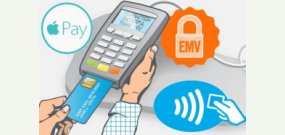What is Missing in Your Retail POS Software?
By: Alan Fisher, President, Retail Business 101, alan.fisher@retailbusiness101.com
Last year, I conducted a system search for a large retailer at a municipal golf facility and I found that most POS software companies still do not understand what inventory management is. The golf course selected ProphetLine, a system that specialized in retail because the typical golf POS products could not provide a small percentage of their inventory needs. Most of these companies believe that inventory management is (1) replenishment and (2) sales and gross margin reports.
Sales and gross margin reports may be important information, but it rarely leads to any future decision. It is too much detail. Good retail management does not start out as detail management.
Could you imagine a controller or yourself wanting to review the financial performance of your business and then looking at the general ledger entries? Of course not. You review a financial statement that provides summarized comparative data to either previous periods and/or a budget. Then, if advertising and marketing expense has increased 15% over the acceptable numbers, you would try to determine what had specifically led to the increase and then decide if it was acceptable or not. If it hit the target, you would probably not be searching through the numbers. Reviewing a sales and gross margin report is tantamount to reviewing general ledger entries.
By now, I am sure you are wondering what is important for managing retail in the golf industry. The most important statistic in all of retail is the Stock Turn Rate (STR) and you should hear the Hallelujah Chorus in the background when these words are spoken. The STR measures how many times an invested dollar is sold over a year.
To simplify the understanding of this, let’s look at the life of one solitary item in a fictitious golf shop. The buyer selects a supposedly great golf shirt that costs $25 and she (since most great apparel buyers are female) intends to sell it for $75 (a planned margin of 66.7%). However, that shirt sits untouched in the golf shop throughout the entire year until someone comes in on Christmas Eve and buys it as a last minute gift for an unloved relative. On the gross margin report, the buyer can pat herself on the back about how it earned that planned $50 and 66.7% profit. Since STR is not a part of the system reporting, it looks good for profit percentages.
However, a second buyer bought the same shirt for her shop and, after four months, decided that the shirt was a mistake. So she reduced it to $40 and was able to sell (unload) it. However, this shop was able to pocket $15 in profits and reinvest the original $25 into some product that had a higher likelihood of selling at a reasonable profit. So the second product sold at $60, earning another $35 in profits and giving the shop the opportunity to reinvest a third time. At the end of the year, this shop actually looked worse on the gross margin report because it only earned 53.1% in profits. However, there was $85 in profits instead of $50. The second shop had a STR of roughly 3.0 while the first shop had 1.0.
This is the same concept as investing in the stock market. As soon as you realize that your investment is not going to earn the return by the time you need it, you dump it and reinvest in something that can accomplish both the time and the return. Your POS software should accomplish this for you automatically.




